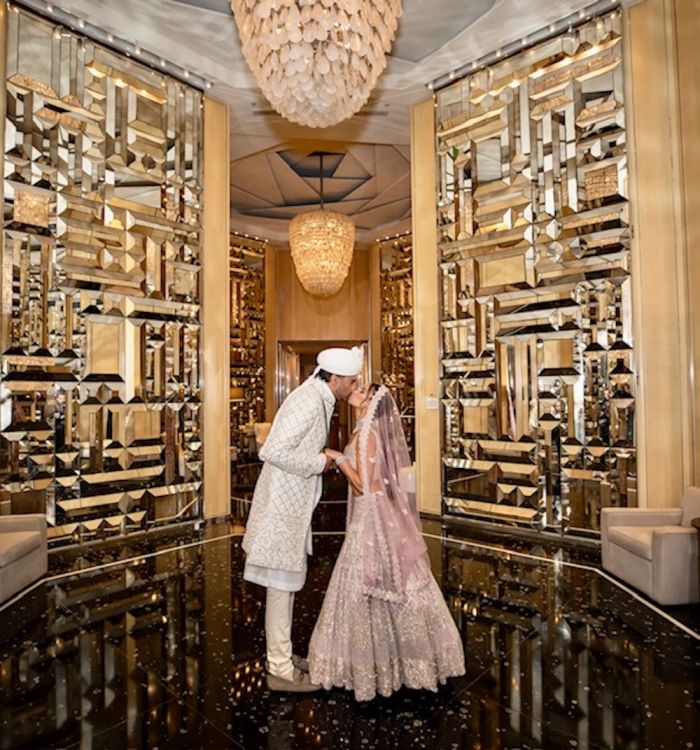[ad_1]

PS Sabati
The personal journey, in terms of experience, usually means that the writer is often either a participant or an observer. In the case of this cross-cultural, Persian/Indian wedding, we experienced both. We participated, observed, and felt what others felt – all during a Blue Moon and a hurricane’s shreds of rain and occasional thunder.
Sometimes weddings, usually considered celebrations of future joy and happiness, can be to some, poignant remembrances of things past, of promises unkept, forgotten, or of partners passed. But this one, that took place on September 1-2, two days, in Florida, seemed to combine a tinge of sadness (the groom’s mother passed away recently) with great amounts of expressed joy.
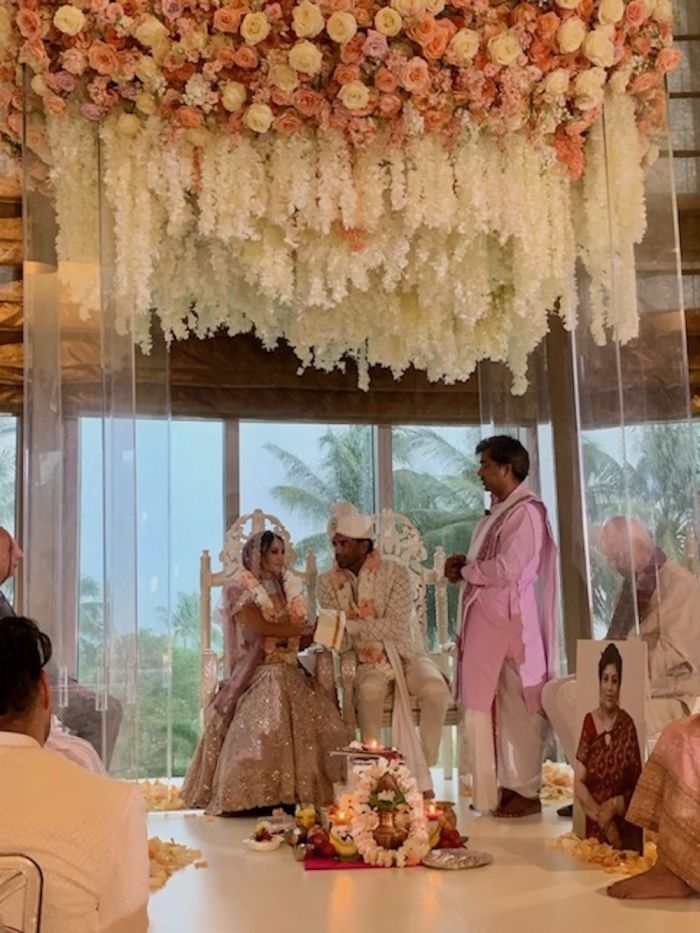
Shefali Sharma
On the Mandap, or alter, a large image of the groom’s mother in a photograph was placed alongside her living husband, the father of the groom. So, through this image, her prescient presence was still felt. Sitting across from the father and image of the mother of the groom, were the parents of the bride. Sitting in front of both sets of parents were the bride and groom. And above all of them were the ceiling décor of roses and falling flower branches.
It was a pious, meaningful and to the Hindus, a holy ceremony, defining the serene rituals of a true Indian wedding. There was a call from the Pandit, or the Hindu Priest, to the spirits of the grandparents, the great grandparents, and all others in the groom’s and bride’s bloodlines to be there in spirit, blessing the couple with happiness and a long life. Then, there was the Granthi Bandhan – the tying of the marital knot, the lighting of the Sacred Fire, as they offered prayers to Agni, the God of Fire, to dispel all darkness, and ignorance, bringing light to the couple. The couple circle the Holy Fire, then take Seven Steps around it, as they commit to duty, prosperity, and responsibility.
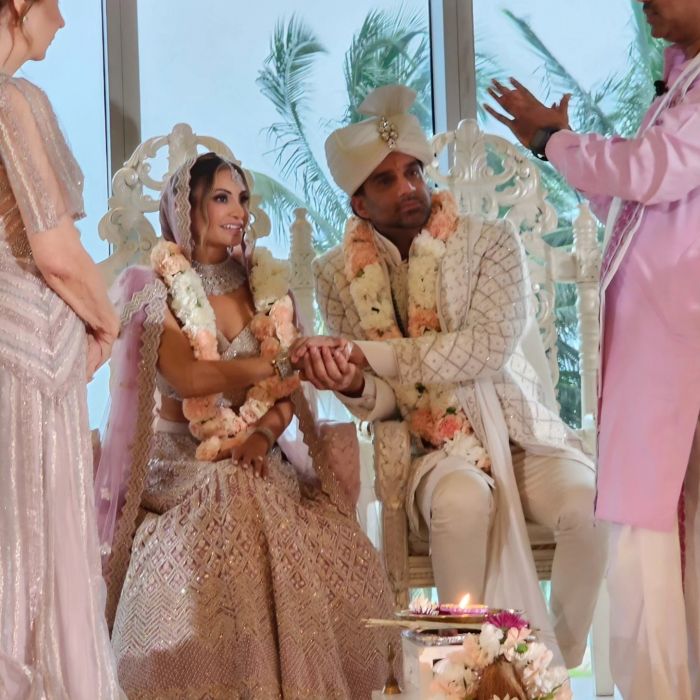
JS Kime – The blessings of the Pandit
Finally, the Sindoor and Manga-Sutra Ceremony was completed, announcing the bride and groom were now man and wife. For each step, there were prayers, and blessings. There seemed nothing secular about it, and for the hours we as audience reflected on the ritual being presented; we became part of the process, praying for their happiness for the future, hoping for the best, as, oddly, the rain outside from tatters of the hurricane, became less forceful, as if, even from the outside, the love inside conquered the weather outside, as we all pondered that love, at least for this magical time, conquered all. We were reminded of the great Indian poet Rabindranath Tagore’s lines in one of his devotional poems, and, especially after seeing this ceremony, the poetry took on a more profound meaning:
Let your love play upon my voice and rest on my silence.
Let it pass through my heart into all my movements….
Let me carry your love in my life as a harp does its music,
And give it back to You at last, with my life.
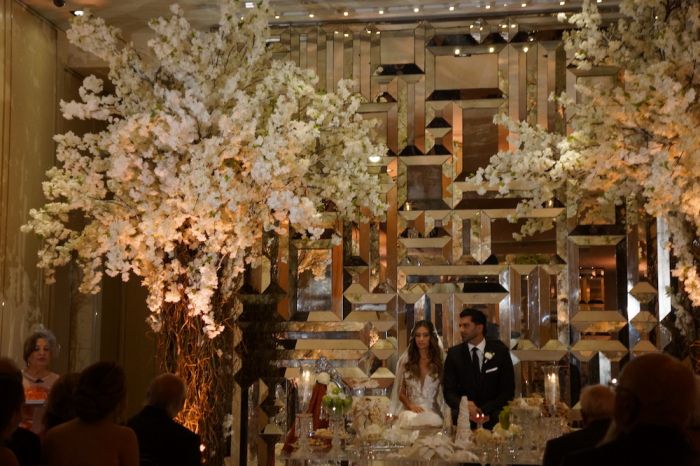
Susan Kime – Bride and Groom at the Sofreh table
The next evening was the ritual of the Persian bride, as relevant and certainly as expressive, with different symbols and meanings from the Indian wedding the evening before. The Persian wedding ceremony is called the Agdh, – as the celebration began with bride and groom sitting at the head of a table called the Sofreh – the wedding table –also called the Table Of Commitment – and is at the heart many Persian wedding celebrations.
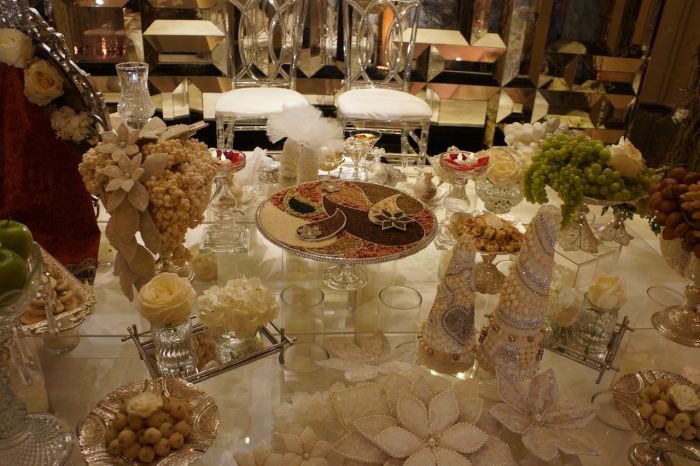
Susan Kime – The Sofreh Table
On the table are spices and herbs to protect the bride and groom from the evil eye. Eggs and nuts represent fertility and abundance, while gold coins represent prosperity. Pastries point to the sweetness of a shared life, and lighted candles represent the bright future ahead. At the head of the Sofreh, they both are close to a mirror facing outward, called the Ayeeneh. This mirror symbolically brings light, and optimism to the marriage. And it is also then that the bride and groom see their image together as one in the mirror.
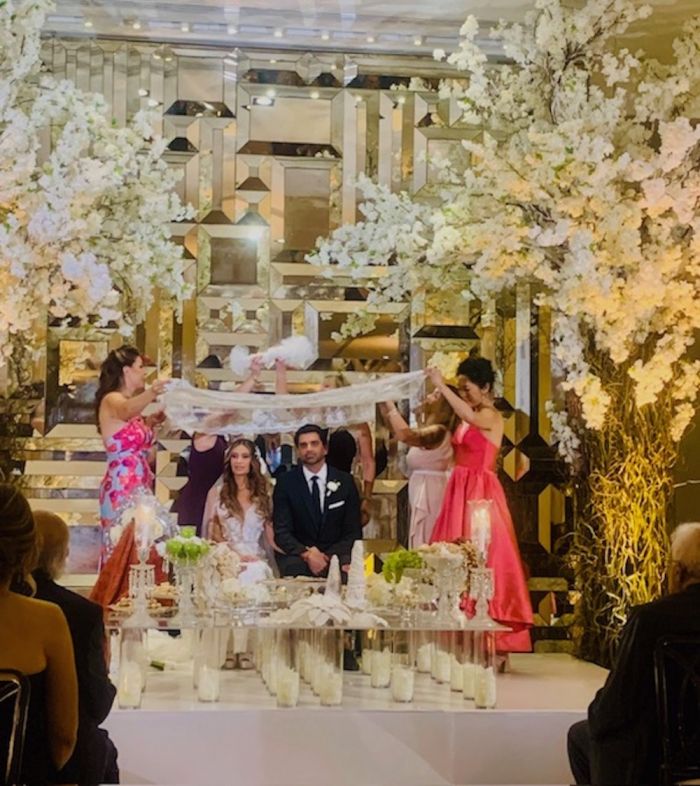
PJ Sadati – The Sugariing Ceremony
Prayers are said, then the Sugaring Ceremony begins. A lace cloth is draped over the bride and groom’s heads and two large sugar cones are slowly rubbed together, creating a haze of sugar dust to symbolize the hope for “sweetening” the couple’s life together. It was said that happily married women are chosen and conduct the ritual and use the sugar cones.
After, the many bridal presents are brought to the bride and groom from various immediate and distant family members and friends. During the ceremony Persian poetry, usually from Hafez and Rumi are spoken, and pondered. We did not hear the complete poem quoted by Hafez, but one of his great ideas is this, so symbolic of this dual, cross-cultural marriage: We are people who need to love because love is the soul’s life, love is simply creation’s greatest joy.”
Upon the conclusion, the joy of two becoming one, the Persian ceremony is finished. Both ceremonies seemed to blend well to design an atmosphere of light, generosity, and a kind of positive energy that emanates from couple to the participants. Including us.
But both ceremonies were greatly enhanced by the environment where they occurred, the St Regis Bal Harbour Resort. This resort combined the beauty of the environment with the spirituality of the rituals. The exceptional nature of the cross-cultural experience was enhanced by the contemporary glass framework of the lobby walls, allowing light to glow from side too side, by having mirrored walls, allowing light to reflect throughout the wedding and reception spaces, adding sparkle to the corridors. The resort also features antique mirroring throughout and a striking ceiling rosette detail, a signature of the renowned design firm Yabu Pushelberg.
Finally, Godflower marble, quarried exclusively for the resort, can be found on all the floors throughout the ground level; the rich, dark marble is framed by white marble in dramatic fashion and accented with teal flower-like shapes, giving the rare marble its name. The weddings of two into one, were full of flower and light, and seemed to enhance the interiors, allowing both environment and celebration to reflect and refract each other with intense delight of the celebratory moment.
[ad_2]
Source link

